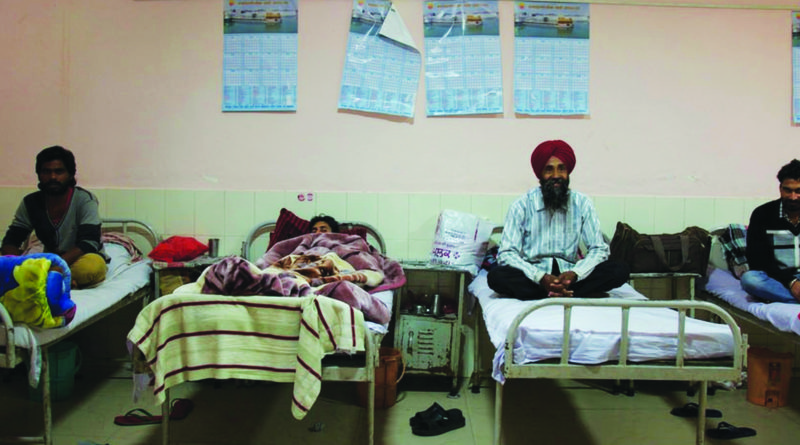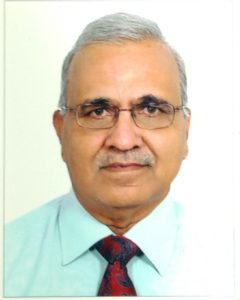Challenges & Opportunities
To become the global leader in healthcare, India needs to come out with innovative ways to deliver healthcare at affordable costs to the rapidly rising population
By Dr Girdhar Gyani
Indian healthcare sector is in focus due to a variety of reasons. There are some positives and few negatives. There is constant demand and realization that we need to cover vast majority of population for delivering appropriate healthcare services. Few states have rolled out social health insurance schemes.
These include; Andhra Pradesh, Telangana, Tamil Nadu, Karnataka, Gujarat, Maharashtra and Rajasthan. Then we have few central schemes like Rashtriya Swasthya Bima Yojana (RSBY) for below poverty line (BPL) population and some for employees and pensioners i.e. Central Government Health Scheme (CGHS), Ex-servicemen Contributory Health Scheme (ECHS) and Employment State Insurance Scheme (ESIS). Although the general perception is that a vast majority of Indian population continues to depend on out of pocket expenses to meet with healthcare needs, but the world bank report suggest that close to 50 percent population was covered under some or other scheme to meet the healthcare expenses.
As the population is beginning to be more conscious about the needs and rights to have basic healthcare, more and more states are expected to roll out similar health insurance schemes. The Government of India, based on their manifesto is also committed to implement ‘National Health Assurance Mission’ and its roll out is already overdue. The scheme in the meantime has been re-casted under the name ‘National Health Protection Scheme (NHPS)’ and it will replace RSBY. It will provide cover of Rs. one lakh for BPL families.
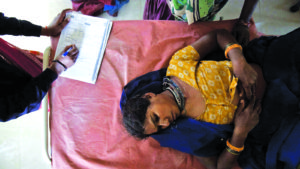 There is proposal to integrate the NHPS with existing state insurance schemes and operate as standalone scheme in those states, which do not have their insurance schemes. Once scheme gets operational, it is expected that more than 70 percent population will come under some or other health insurance scheme. This will take our country close to complying with norms of universal health coverage (UHC).
There is proposal to integrate the NHPS with existing state insurance schemes and operate as standalone scheme in those states, which do not have their insurance schemes. Once scheme gets operational, it is expected that more than 70 percent population will come under some or other health insurance scheme. This will take our country close to complying with norms of universal health coverage (UHC).
Normally for implementing UHC, it is pre-requisite for the government to have a majority share in delivery of healthcare services. Presently, the government has only 30 percent share in Out Patient Department (OPD) and 40 percent share in In-Patient Department (IPD) services. Even in terms of healthcare spending, the government contributes to 25 percent in terms of GDP spending, with the balance 75 percent coming from the private sector. Therefore, to realise its goal of UHC, the government will have to rope in private sector in a big way; something similar to what Andhra Pradesh (AP) government did under Arogya Shri scheme. In this scheme, the AP government reimburses to empaneled hospitals for delivering cashless healthcare services to BPL citizens. Such an arrangement has been proved to be win-win for government, industry and community.
The government is spared of investing in healthcare infrastructure and on the other hand, the private sector gets business opportunity. The challenge in such an arrangement is how the government fixes the rates of various medical procedures for reimbursement to the empanelled hospitals, as we have not done any exercise in our country to fix the costing of various medical procedures. Government for its schemes like CGHS/ECHS has fixed the rates on the basis of open tenders, by which many rates have come out to be highly illogical.
Recently, some of the state governments have indicated that they would take the regulatory route to fix the rates for medical procedures and would make it mandatory for private hospitals to follow. Once again in the absence of any scientific study, it will be disaster to fix the rates as it will compel hospitals to adapt short cuts and compromise on quality and patient safety. Considering that India was registering a whopping 5.2 million medical errors annually (as per a Harvard study), any measure to cut down the cost will lead to further increase in morbidity and mortality.
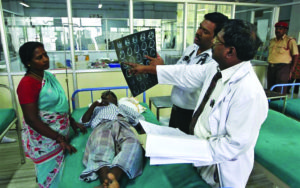 According to an Institute of Medicine report in 1999, to ‘err is human raised’ the important issue for the first time about un-reported medical errors and their catastrophic impact on human lives. We in India till date have no institutional framework to monitor or measure the medical errors/ sentinel events. It will therefore be important that while rolling out UHC, the government would have to make sure that quality was taken as pre-requisite for all participating hospitals.
According to an Institute of Medicine report in 1999, to ‘err is human raised’ the important issue for the first time about un-reported medical errors and their catastrophic impact on human lives. We in India till date have no institutional framework to monitor or measure the medical errors/ sentinel events. It will therefore be important that while rolling out UHC, the government would have to make sure that quality was taken as pre-requisite for all participating hospitals.
It is pity that even after 12 years of the launch of National Accreditation Board for Hospitals (NABH); we have only about 550 hospitals accredited. Government, scheme owners and payers have to give serious thought on how to incentivize quality. It is encouraging to note that Insurance Regulatory and Development Authority (IRDA) has issued an order by which all private insurance schemes will empanel only those hospitals/nursing homes/clinics, which shall have at least entry level NABH certificate. Similarly some of the state governments like Tamil Nadu and Andhra Pradesh have issued similar order for their state level insurance schemes.
Quality in healthcare will soon go beyond accreditation. Hospitals will be judged on many dimensions like being patient friendly, green, lean and clean. Quality and cost will be integral factors. Hospitals will be evaluated on how much value they add for unit payment. Value will be linked with clinical outcomes, patient’s satisfaction index, etc. Some of these concepts are already being practised in developed nations. Tomorrow’s hospitals, therefore, will have to be intelligent/ smart to account for these factors.
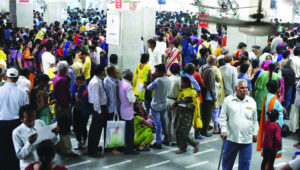 To sum up, the Indian healthcare is facing the challenge to come out with innovative way to deliver healthcare to its more than 1.2 billion people, without asking for huge outlay. The challenge for hospitals is to provide quality service at affordable cost by being SMART. The opportunity is to be the global leader in healthcare by improving patient safety records and by improving cost competitiveness, i.e., providing first-rate services at third-world cost. This will not only help improving clinical outcomes of our country but will also raise the stocks of foreign exchange by way of increase in number of medical tourists from overseas countries.
To sum up, the Indian healthcare is facing the challenge to come out with innovative way to deliver healthcare to its more than 1.2 billion people, without asking for huge outlay. The challenge for hospitals is to provide quality service at affordable cost by being SMART. The opportunity is to be the global leader in healthcare by improving patient safety records and by improving cost competitiveness, i.e., providing first-rate services at third-world cost. This will not only help improving clinical outcomes of our country but will also raise the stocks of foreign exchange by way of increase in number of medical tourists from overseas countries.
In the end, we need to empower the community to enable citizens to demand quality. We also need to educate the community by which healthcare along with education and environment become election agenda in our country. All in all, healthcare industry is in for exciting times ahead.
(The author is Director General, Association of Healthcare Providers, New Delhi)

